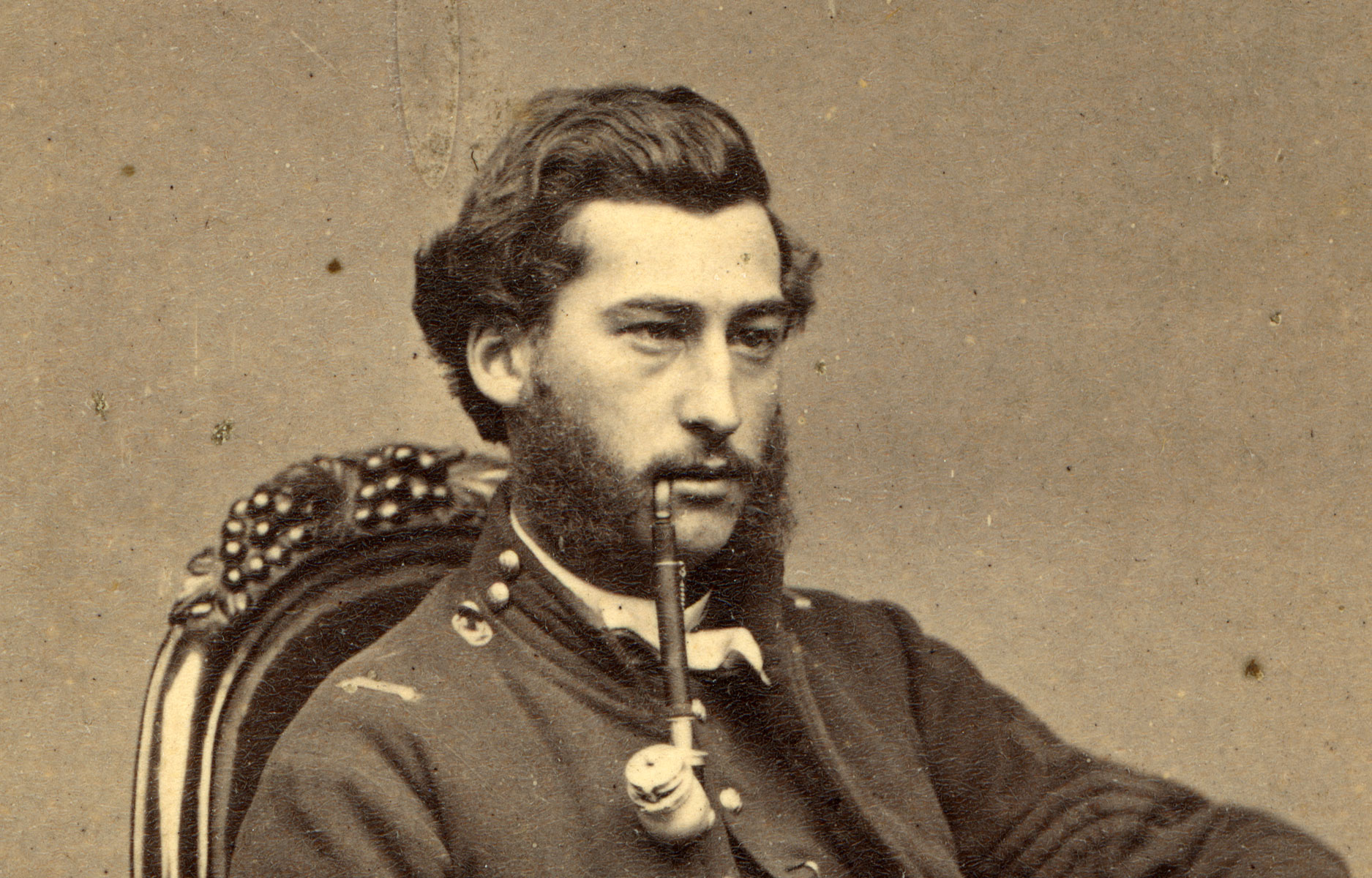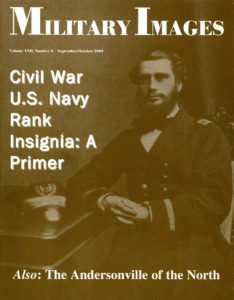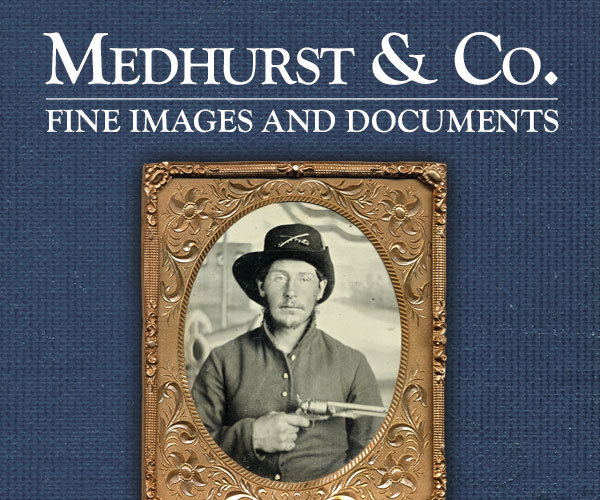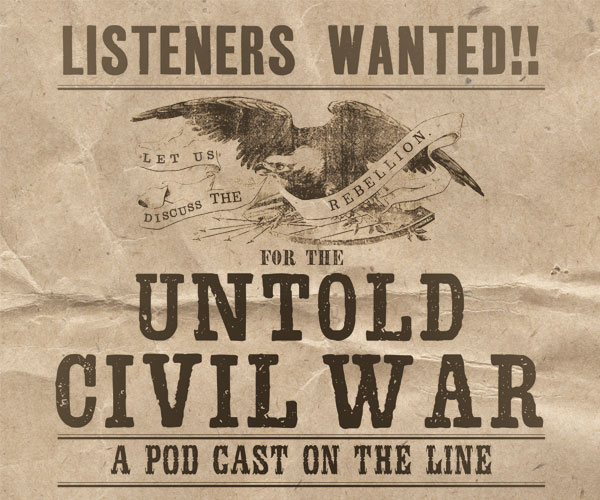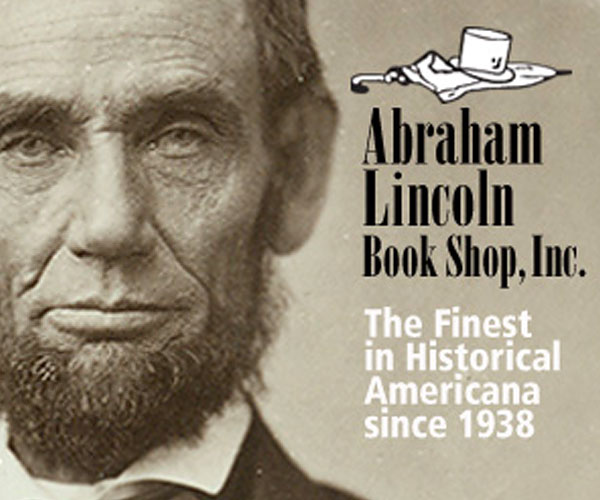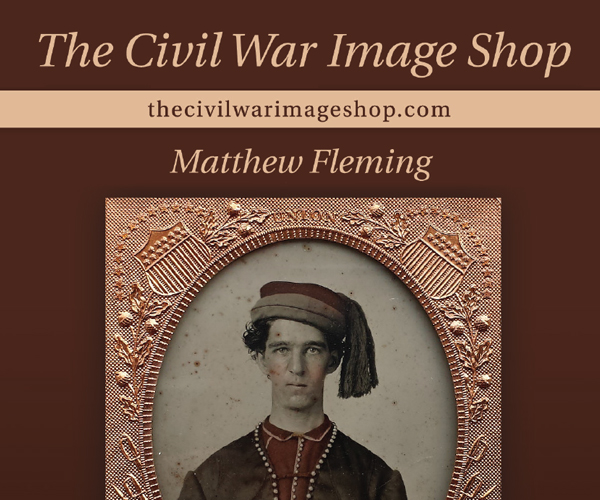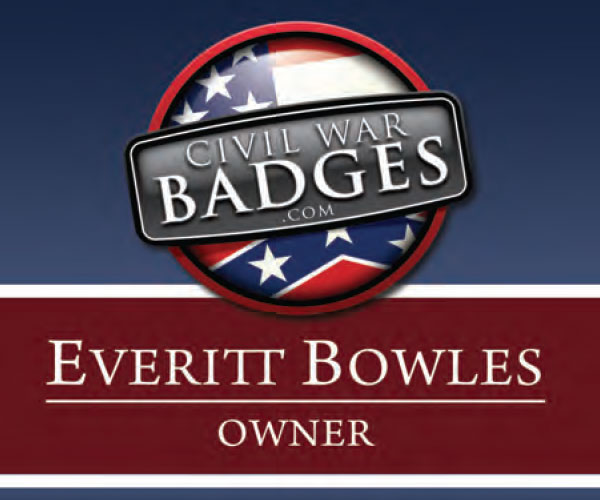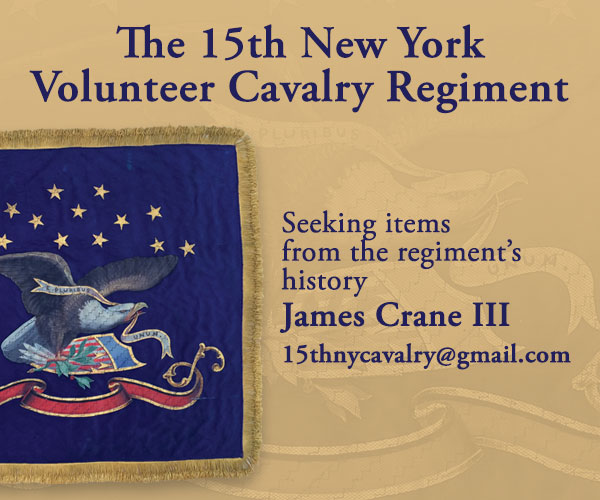The complete issue
Vol. XXII, No. 2
(48 pages)
Print edition: Visit our store to check availability
Digital edition: Visit JSTOR.org to purchase
Subscribe to MI
Explore the MI Archives: Browse | Advanced search | Tutorial
Inside
Cover image
A photograph of a U.S. navy lieutenant by Black of Boston wears the rank insignia consistent with 1852 regulations.
Table of Contents (p. 1)
Editor’s Desk (p. 3)
The editor announces that he has been keeping an index of every unit mentioned in the issues, and that it will be available on the web site and also parts of the magazine. Also, MI has a new addition to the team of book review editors: Thomas Boaz, author of Guns for Cotton, England Arms the Confederacy and Libby Prison & Beyond, A Union Staff Officer in the East, 1862-1865.
Mail Call (pp. 4-5)
Topics include congratulations to Phil in his new role as editor and a question about a carte de visite identified as Lotta Crabtree, who was an actress in post-war California.
Rank Insignia of the Civil War U.S. Line Officers: A Primer by Phil Katcher (pp. 6-10)
The author notes, “The U.S. Navy constantly changed its rank insignia system during the war. These different badges give clear clues as t the date of period images.” The survey of ranks continues with text and graphics that diagram the changing cuff designs. Portraits of the following naval officers are also included: Capt. Henry W. Morris, Cmdr. David D. Porter, Cmdr. Edward Hooker, Cmdr. John L. Worden, Master William F. McCann, Lt. Cmdr. George A Bigelow with Surg. Thomas Potter, and Ensign Seth L. La Dieu.
The Andersonville of the North: A Documentary History by John Eltzgaard (pp. 11-17)
According to the author, “Camp Douglas, near Chicago, gained a reputation as the Andersonville of the North. Yet it had one thing Andersonville didn’t, its own photographer.” The narrative continues with a series of report excerpts that touch on various aspects of life inside and outside the infamous camp, and a brief biography of photographer Daniel F. Brandon. The story is illustrated with a Brandon photo from the top of a wall of the camp and portraits of guards (7) and prisoners (8). Three of the guards are identified: Mathias Kesler of the 104th Illinois Infantry, Samuel S. Fairfield of the 65th Illinois Infantry and Capt. James M. Tracy of the 8th Veteran Reserve Corps. Two of the prisoners are identified: William M. Carter and William E. McCormick of the 8th Kentucky Cavalry. Three other prisoner portraits have tentative identifications: M.O. Mason Ryan of McLean, Texas, Joseph Holt and L. Daly.
A Photograph of the C.S.S. Alabama “In Chase” by Stanley Warren and Budd LaRue (pp. 18-22)
The discovery of a photograph of the famed rebel raider is illustrated with the image that was found in the Museum of the Confederacy and six other images.
The Murdered Children by Steve DeGenaro (pp. 23-24)
During the decade following the Civil War, a disturbed veteran was involved in the gruesome murder of two children in Columbiana, Ohio. Ervin Porter, who had served in Company C of the 24th Ohio Infantry, distinguished himself during his military service and suffered a wound during the Battle of Chickamauga. On Dec. 12, 1872, he killed his young daughters with a small hatchet. Declared insane, he was imprisoned and died in captivity in 1875.
The Friends of Davy Corser: An Album of Wartime Acquaintances by Mahlon P. Nichols (pp. 25-27)
Service in the 14th New Hampshire Infantry during the Civil War was for 15-year-old David S. Corser the beginning of a remarkable career as a lawyer, and later as Messenger and Assistant Sergeant at Arms for the U.S. Senate. From 1885 to 1933, he served every president from Grover Cleveland to Franklin D. Roosevelt. He died in 1937. His surviving personal photo album includes his wartime likeness plus images of comrades 1st Lt. Marcus M. Holmes, 1st Lt. James B. Mason, 1st Sgt. David A. Macurdy, 2nd Lt. Walter H. Sergeant, Pvt. Joseph T. Cotton and a soldier believed to be his brother, Hamilton Corser. Two post-war photographs are also featured of Corser with veterans.
Staff Officers of the 43d Massachusetts Volunteers: Photographic Detective Work with the U.S.A.M.H.I. by Paul R. Johnson, M.D., F.A.C.S. (pp. 28-31)
A case study of the how the author came to identify seven officers pictured in a large outdoor albumen photograph marked, “Camp Rogers, Encampment of the 43rd Mass. Vols., Newbern, N.C., March 13, 1863.” The photographer, G.H. Nickerson, was a first lieutenant in Company E. of the regiment. The men are Col. Charles L. Holbrook, Quartermaster Henry A. Turner, Lt. Col. John C. Whiton, Chaplain Jacob C. Manning, Surg. Alonzo Carter Webber, Adj. James M. Whitney and Maj. Everett Lane. Also included are photographs from the U.S. Military History Institute in Carlisle Barracks, Pa., that corroborate the identities of the officers.
Uniforms & History by Michael J. McAfee (pp. 32-33)
In this installment of the column, “The U.S.M.A. Corps of Cadets,” McAfee explains that Cadet Gray and Army Blue are all part of the same history that dates back to the War of 1812. Illustrations include two cadets, W.R. Rowell in full gray dress uniform and Charles L. Fitzhugh dressed in the furlough uniform of blue.
Stragglers (pp. 34-38)
Featured images include 2nd Lt. DeLafayette Chandler of the Pennsylvania Light Artillery, Cpl. Thomas M. Round of the 46th New York Infantry, a Confederate officer wearing a uniform jacket with fur muffs attached to his cuffs, a Georgia soldier with a Colt Navy revolver tucked into his waist belt and Cpl. Richard M. Goshorn of the 34th Indiana Infantry who is dressed in a Zouave-inspired uniform.
Captain Bob’s Caveat Emptorium, House of a Thousand Bargains by Harry Roach (p. 39)
In this column, readers are persuaded to believe that two photographs are portraits of Confederate and Union soldiers. In fact, the “Confederate” is a British soldier who served in the 2nd Shropshire Rifle Volunteers. The Yankee is a corporal in the Salvation Army, circa 1870-1900.
Index to Civil War Regiments (pp. 40-45)
Passing in Review (p. 46)
Two publications are reviewed, Terrible Swift Sword, Union Artillery, Cavalry and Infantry, 1861-1865 (Stackpole Co.) by John P. Langellier and Warrior in Gray: General Robert Rodes of Lee’s Army (White Mane Books) by James K. Swisher.
Sutler’s Row (pp. 47-48)
